Current Projects
| Zooplankton Mediated Removal of Microbial Pollutants in Natural Systems The aim of this research is to explore the efficacy of freshwater zooplankton to remove microbial pollutants in natural systems and develop a predictive model correlating performance with different environmental variables. This project is being funded by a NSF grant. |
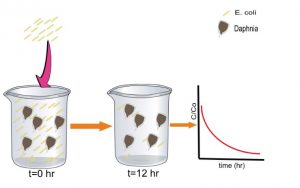 |
| Fate and Impact of Silver Nanoparticles in Treatment Wetlands The aim of this research is to develop an understanding of the fate of silver nanoparticles in treatment wetlands and determine the impacts on filter feeding organisms within the system. This project is being funded and is in collaboration with USGS. |
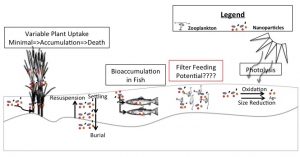 |
| Improved Bioretention Basins Using Mycoremediation for Treatment of Agricultural Runoff The aim of this research is to demonstrate the effectiveness of mycoremediation in bioretention basins to reduce nonpoint source pollutants in agricultural runoff. We have worked to generate proof-of-principle data that recycled mycelium blocks can cause significant reduction in E.coli levels in water during simulated storm events. |
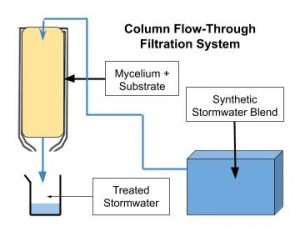 |
Past Projects |
|
| Bivalve Uptake of Contaminants of Emerging Concern: This research examined the use of bivalves as part of a natural treatment system to improve water quality by removing a seven personal care products and pharmaceuticals with varying hydrophobicities and pKa values. Exposure experiments u were conducted to understand compound partitioning and determine uptake and depuration kinetics. Data showed greater than 50% removal of the biocide triclocarban and the pharmaceutical propranolol by bivalves. Contaminant removal from the water column was achieved through accumulation in bivalve tissue or settling via excreted feces or pseudofeces. Bivalves exposed to anionic hydrophilic compounds such as clofibric acid and ibuprofen showed limited uptake or removal.Experimental data indicate that bivalves can play a significant role in removal of moderately hydrophobic trace organics. Bivalve augmentation could be applied to improve water quality as part of ecological restoration projects in lakes and rivers or be used within a treatment wetland as a final polishing filter. |
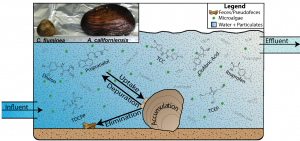 |
| Bivalve Reduction of Escherichia coli (E. coli) in freshwater: This research evaluated the effectiveness of using a native freshwater mussel, Anodonta californiensis, to improve water quality through filter-feeding action to achieve a reduction of E. coli in an urban lake and agricultural river. Mountain Lake, located in San Francisco, has experienced degradation in water quality and alteration of the ecosystem due to urban development. A 4-week field study showed a consistent 1-log reduction in E. coli by the mussels and resulted in prioritization of the re-introduction of A. californiensis in the lake. The Pajaro River watershed covers 1,300 sq mi of predominantly agricultural land. A. californiensis exist in the watershed, but large die-offs were occurring due to drought. Sampling of hydraulically distinct pools in the river showed that bivalve density is correlated to lower E. coli concentrations. A subsequent 24-hour study showed that E. coli uptake rates depended on bivalve density. This work resulted in community engagement in both watersheds and initiated efforts to reintroduce A. californiensis to Mountain Lake. |
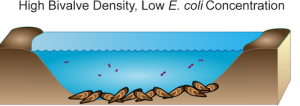 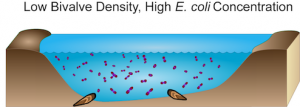 |
| Bioaccumulation of Polychlorinated Biphenyls (PCBs) in Diamondback Terrapins This research examined the bioaccumulation of PCBs in the northern diamondback terrapin (Malaclemys terrapin terrapin), a species that is endemic to the brackish waters of the East Coast salt marshes of the United States. The two populations studied were located in sites with low and high levels of PCB contamination. The utility of the chorioallantoic membrane (CAM) as a non-lethal sampling technique for PCB analysis was evaluated. In order to determine the viability of the CAM, maternal transfer of contaminants was also studied. PCB congeners were detected in liver, egg, and CAM samples, less chlorinated congeners preferentially partitioned in the CAM. Liver and egg sample PCB concentrations were strongly correlated, but the CAM concentrations were weakly correlated to liver and egg samples. Study results indicated that maternal transfer of PCB contaminants does occur with selective partitioning of congeners into the CAM. |
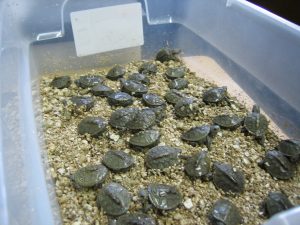 |
